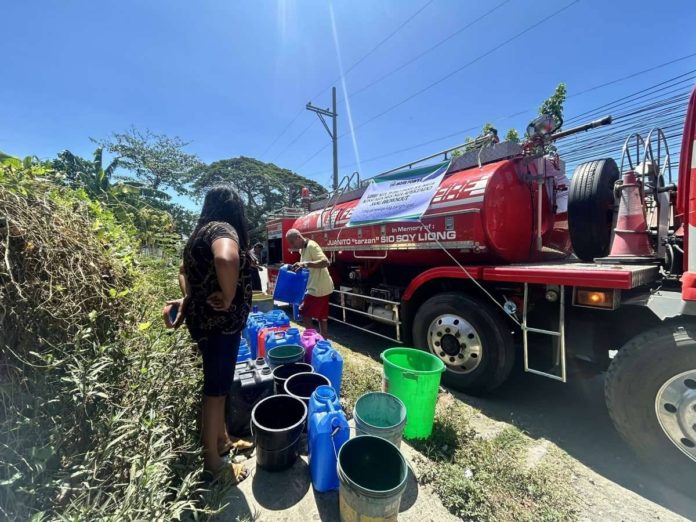
BY GEROME DALIPE IV
ILOILO City – For the next three months about 46,460 individuals affected by the drought from various villages in this city will receive at least 15 liters of water daily.
The Iloilo City Council yesterday approved the recommendation of the Iloilo City Disaster Risk Reduction and Management Council (CDRRMC) to place this city in a state of calamity due to water shortage.
The science-based projection showed some 23.23 percent, or 23,230 individuals from 25 barangays in the city are affected by water scarcity.
“The current condition in the barangays requires an urgent need to declare a state of calamity so that the city government can provide immediate assistance,” read the council’s three-page resolution.
The declaration will allow the city to utilize its quick response fund (QRF) to address the water scarcity.
The CDRRMC proposed P12,544,200 for the purchase of additional water, and to provide for the immediate potable water needs of affected communities.
Barangays in the City Proper District are severely affected, as well as the districts of Arevalo and Mandurriao.
Bulk water distributor firms, South Balibago Resources Inc. and Metro Pacific Iloilo Water pledged to provide water tanks to barangays.
The disaster council said the taskforce discussed the preparedness, prevention, and mitigating measures for various sectors on the effects of the drought spell to various barangays in the city.
The taskforce surveyed shallow wells in 25 barangays to establish the degrees of exposure of the residents relying on shallow wells.
Survey results showed that drought caused the swells to dry up due to prolonged dry spell and drought conditions.
“This condition also poses the compounding risks to the residents thus, succeeding surveys were done to constantly monitor the effects of drought,” the resolution added.
Engr. Neil Ravena, General Services Office (GSO) and the Council’s Logistics Cluster head, earlier said they arrived at such a decision after data from their technical team showed 30 percent of the affected population.
“The affected population almost reached 30 percent of the affected individual so that is more than enough to declare the state of calamity,” said Ravena.
The hot weather spawned by the drought spell triggered below-normal rainfall that resulted in the rapid decline of water level in Maasin Dam, the main raw water source of the water utility.
In its latest advisory posted on its social media page, the MPIW said the water level in Maasin Dam has dropped 93.79 meters above sea level (ASL) from 93.76 meters due to extreme heat triggered by the El Niño phenomenon.
The water utility’s total bulk water supply has now reached the “critical level” from 65.379 million liters per day (MLD) to 64.637 MLD, which is also below critical level.
The water utility company earlier announced it is on “heightened alert” after the water level in Maasin Dam continues to decline rapidly.
The water utility remains on heightened alert despite the additional 10 million liters per day from one of its bulk water suppliers.
With the water demand during the drought spell, MPIW said the additional water supply from its bulk suppliers will help stabilize the water supply production to an average of 70-73 million liters per day for its 48,000 service connections.
The water utility’s bulk water suppliers source their raw water from the Tigum, Jalaur, and Againan Rivers.
MPIW has allocated about P1 billion for the renewal and rehabilitation of its pipe networks under its service areas.
The pipe upgrades and rehabilitation will reduce water losses due to leaks, hence, an increase in water supply for consumers, Josue stressed.
Pipe leaks, if not repaired, cause water losses, resulting in low water pressure and service water interruptions across the city.
These leakages occur due to many factors, such as age and location of the pipe, rapid temperature changes, high water pressure, clogged lines, ground and soil movement, and loose water connectors or broken pipes./PN



